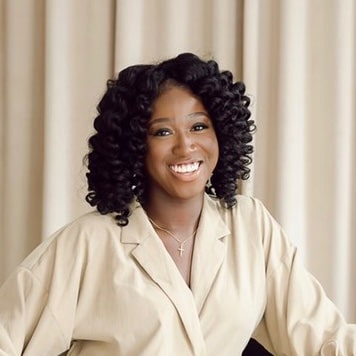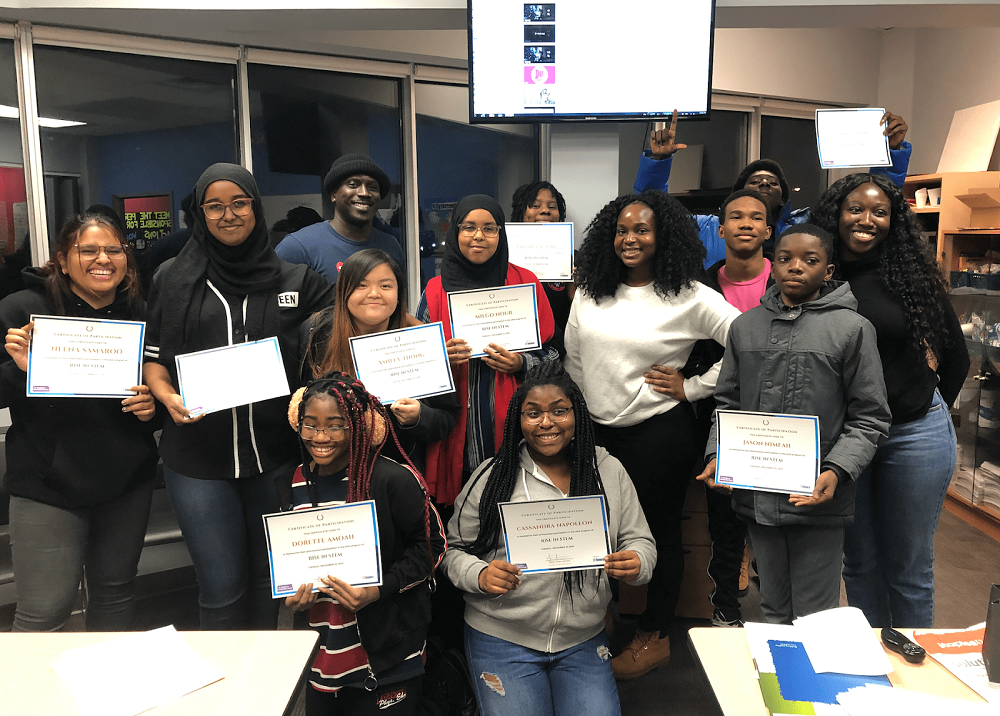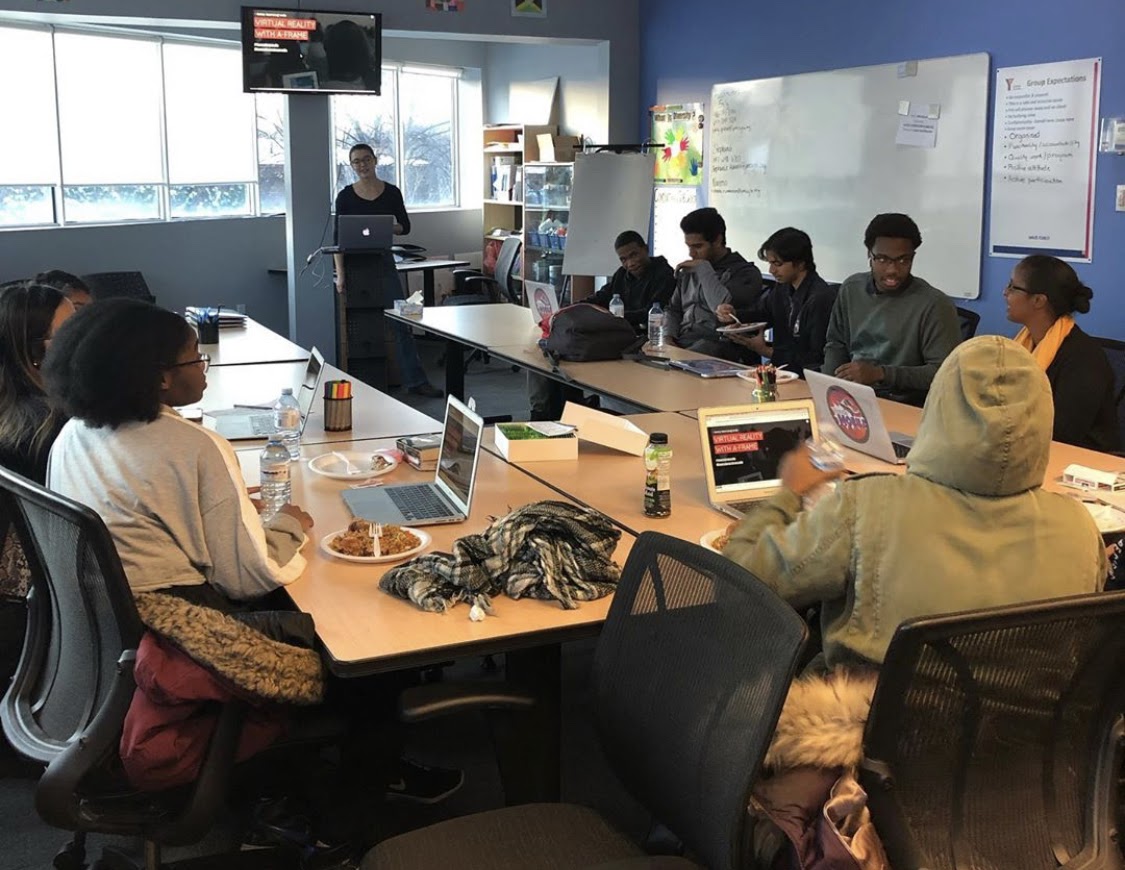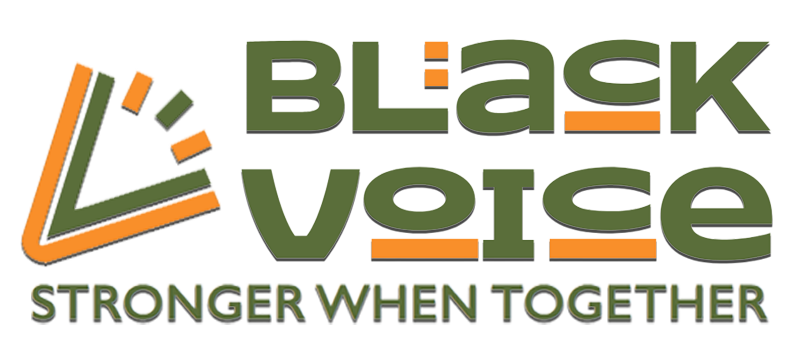By Veracia Ankrah
Posted on August 6, 2021
I spoke with Founder and Executive Director of Rise In STEM, Irene Duah-Kessie, to discuss her journey through academia, navigating predominantly white spaces, overcoming self-doubt and how she hopes the program she created will help future generations of Black youth.

Ankrah: As a kid, what did you want to be when you grew up and what sparked your passion for STEM?
Kessie: Growing up I wanted to be a pediatrician. That’s a doctor that specializes in child care and youth health. I didn’t know I was in STEM but I guess I grew interested in it as a young girl because I admired the idea of helping people get to better health. I’m Ghanaian and like most African kids, I was told that I was going to be a doctor. My younger brother was born six months premature and I was young but at eight-years-old, I was aware of what was going on. Luckily, his pediatrician was also Ghanaian and spoke to him in Twi [a native Akan dialect] and they had a great relationship. I was inspired by her intelligence, and all the other doctors he worked with: his lung and heart doctor and his speech therapist. As his sister, I was a part of the process of his learning and betterment at home. I felt like I was making a difference and it grew my interest in medicine. When I was in grade school, I did well in science and math and knew it was a path I wanted to take, but at that time, I didn’t know that was a part of a greater way of thinking, known as STEM.
Ankrah: How would you describe “STEM” for someone who is not well-versed in your world?
Kessie: STEM is now growing into STEAM: Science, Technology, Engineering, Art, and Mathematics. People are realizing that the arts are quite intertwined with STEM. When you think of being innovative and creative, that’s not a technical way of thinking but the process of doing, problem-solving and using every aspect of the human experience, including art. I try to tell people you don’t have to be an expert in each field to understand the value of skills in these fields. Doctors and scientists are great at analyzing and creating the meaning of things we don’t yet understand. For instance, with COVID-19, mathematics played a part in creating the vaccine with accuracy and minimized room for error or the way humans went from riding animals to travelling in cars that continue to evolve. Lamborghinis are a result of technology, engineering and math. All of these things are a collaborative effort through STEM and when done effectively they solve the world’s biggest challenges. I try to bring STEM, an abstract notion, down to the idea of working with people, problem-solving and making things more fun, easy and accessible.
Ankrah: You mention “they.” Who are the people responsible for the ways we understand STEM?
Kessie: Educators. I say educators because STEM is a curriculum model. When you are in grade school, educators and people who are making world discoveries in the lab realize who they need to work with to help understand and apply concepts. “They” are the decision-makers.
Ankrah: What is the problem with the current STEM curriculum model? Would you say these decision-makers have affected the way Black people are introduced to STEM?
Kessie: The reality is racism is embedded in the education system and other institutions. Who educators and decision-makers are doesn’t disappear when they are at work. If educators have harmful ideals about Black people it will trickle into how they are treating their students. I think educators may have an idea of what success is to them and project that onto Black students, encouraging them to get into solely the sports, the arts or applied course levels in high school, especially for young Black boys. This is not to say those subjects are not important, but that technology is all about design and subjects like math and science (that seem difficult) go hand-in-hand with all other courses. Even if you are not the most “academic” student, people don’t realize you can still go into STEM. It’s about how STEM is introduced to the Black community and how we are treated in these fields rather than being rendered not capable.

Ankrah: Give me a “non-cookie-cutter” definition of Rise In STEM? What inspired the idea to create it? Is what you are doing now with Rise in STEM (working with inner-city Black kids, etc) along the lines of what you thought you would be doing as an adult?
Kessie: I struggle with what to call Rise In STEM but to me, it’s a program initiative and I created it for people like me. It’s inspired by my journey. I went to high school in a predominantly Black neighbourhood in Rexdale and I never felt marginalized. I always felt like I could be on top of the world. But going into my undergrad, at McMaster University in Hamilton, Ont. there wasn’t much representation and I felt isolated being away from home. University was a harsh eye-opener, I didn’t know how things operated or who to ask for help. As a first-generation post-secondary student, I wasn’t aware of things that were set in place to help students, like bursaries and the role of guidance counsellors. As I was approaching my senior years, I realized medicine might not be for me. I doubted myself but pushed to be more involved on campus and I took an experiential course that allowed me to conduct biodiversity and conservation research and support youth programs at an Indigenous reserve in British Columbia. I discovered there is much more connected to the world of health and medicine and that I did not have to be a doctor to improve health or enrich lives. I can do things that are just as impactful but are creative and innovative.
After my undergraduate, I got into a Sustainability Masters program at the University of Toronto because I loved the idea of thinking about the world through the bigger picture like in the ways that moving parts connect. I moved back to Toronto and thought I’d be around Black people but it was ten times worse. I was now the only Black person in a cohort of 30 people as opposed to 500 where I could hide. The struggle was real. The microaggressions along with imposter syndrome, self-doubt and personal life were staring me dead in my face. As a Black student there is so much you have to deal with and as you advance further into academia, the reality of you being one of the many few becomes real. I was frustrated. Before graduating, it was hard to feel accomplished. I remember thinking, I’m proud to be the only Black student graduating from my program but feeling like I did not have to feel this exhausted and beat up, whereas my peers took a graduation trip the following week.
I remember thinking this is not cool and wanting to do something to provide young Black people with support and guidance on how to navigate these spaces, to save them from unknowingly falling into a system without the understanding that racism is real, especially if you grew up in an area where you might have not dealt with blatant microaggressions because everyone looked like you. I started Rise In STEM for a girl like me, who is a little oblivious but has so much potential and providing familiarity to that student that is in a similar situation feeling lost in first-year or displaced during their masters, to know that there is a community behind you that you can fall back on and know you can achieve the impossible. I want young kids to know that if you need support we are here for you but also are here to push you to discover your talents and be your best self. Your talent may not be coding but the idea of knowing how computers work may trigger the interest to learn about computers and eventually create the next ground-breaking social media platform.
Ankrah: Speaking of coding, what are some other ways STEM shows up in our day-to-day lives?
Technology is the software behind the running of the computer and engineering is what builds the computers. Black kids aren’t pushed into these spaces but are the biggest consumers. Imagine if we knew how to build apps and created our TikTok because our vibes are propelling these apps to the forefront. On a larger, life or death scale, these sorts of technological biases also affect medical technologies. Sometimes, doctors can’t identify parts of Black bodies through their technology because historically, technology was not tested or approved for Black people. So when they generalize discoveries that aren’t made with us in mind our people continue to be at a disadvantage and fall victim to these systems. Young Black people need to be at the helm of all aspects of innovation in society because white people are not thinking about or prioritizing our unique needs and issues. When it comes to healthcare, access to food, wealth and more, these are the larger reasons for youth to get into STEM. It’s not just about having jobs, it’s about actively creating our world.
Ankrah: When is the moment you knew Rise In STEM was something special and enroute to making a real difference?
I applied for a grant and didn’t get it then applied to the next one with the City of Toronto and got it, but was scared. When I was away completing my undergraduate, I felt disconnected from the kids and program for a while and declined the offer via email. Then, one of the City Of Toronto members that played a role in choosing me for the grant, who happened to be a Black man, called my phone and mentioned that my application was picked out of about 60 applicants. He said, “you’re not declining this grant, so figure it out!”. I remember where I was when I got that phone call and it gave me the push and confidence I needed. It was lonely and a struggle in the beginning but I believed it would all play out, as I put myself out there, I connected with people who understood the vision and the youth propelled me as well.
Ankrah: If you could speak to 14-year-old Irene, what would you say to her?
Kessie: She’d be shocked but proud. I was always curious and optimistic growing up but never envisioned what I would do in the future. I always wanted to work with children and youth but not in this nature. I never understood the systemic parts of it. Yea, Rise In STEM is on the ground and working with young people but the idea is to advocate for systems to change especially education. I never saw myself trying to be a community leader in this way but I know she’d be proud.
Now, I’m a big believer in affirmations and I would tell her how smart, beautiful, kind and confident she is and to always remember and know her worth, value and what she could bring to the table despite what others may think or say. And also, not dim her light to make others feel comfortable. It’s easy to internalize that doubt. I’d tell her to not play small–shout out to that guy at the City of Toronto. I almost played myself. Don’t aim small and shoot for the stars; there is a world to discover and if she stays the course and works hard, there is nothing she can’t achieve. Lastly, to understand that whatever doesn’t work out is about redirection for something far greater.
Ankrah: What new ventures are you hoping to see happen for Rise In STEM in the next 5 years?
Kessie: I hope to diversify the programs we offer. We encourage kids to get into STEM learning but it’s also about providing a holistic approach. I want kids’ personal, mental and emotional health needs to be prioritized and expanded with multiple specialized services. I would also love us to have a physical space and center led by the youth that radiates Black excellence and holds meaning within the community. Again, having a systemic effect, so hopefully working with the school boards and decision-makers to ensure learning opportunities are made with Black youth in mind. I see Rise In STEM being a key player in those conversations.

“Sometimes you may have great ideas but doubt yourself because of past silencing experiences and self-doubt. If you don’t see yourself reflected in something, how could you aspire for it.”
-Kessie
Follow Rise In STEM on:
Instagram @riseinstem
Twitter @riseinstem
Facebook @riseinstem
You can also view Rise In STEM on LinkedIn and their website.
Portions of this interview have been edited for clarity.

